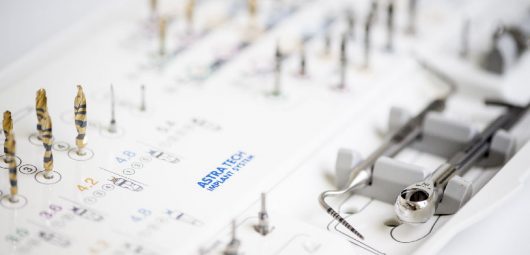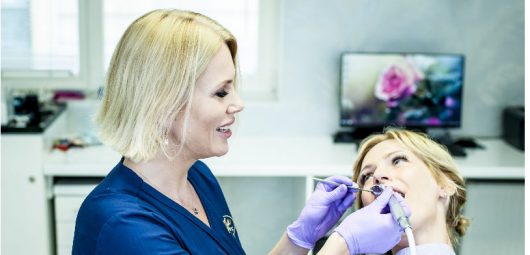Bruxism (teeth grinding) is the involuntary masseter muscle overactivity that leads to clenching and grinding of teeth. The condition concerns mostly young people. The prevalence of bruxism is estimated at 8-20% of the population. It typically occurs during sleep, but may also occur during the day. Many people are unconscious of their teeth grinding habit. These individuals may not even be aware of these problems occurring during sleep and often wake up in the morning with sore jaw muscles or a headache. The forces activated on the chewing surfaces of patients with bruxism can be up to 10 times greater than those occurig in the normal process of biting and chewing. Bruxism can cause tooth pain, teeth grinding (eating), breaking tooth crowns, tooth loss, and may lead to pathological changes in the temporomandibular joint in the form of clicking and poping. The appearance of facial muscles also changes due to hypertrophy of masseter and temporal muscules, which makes the face look ‘square’.
The causes of bruxism may be different, both local and systemic. Stress is a dominant factor among the systemic causes of bruxism, therefore, it often concerns people in leadership positions and is an expression of experienced stress. Bruxism can be also caused by local factors such as chewing gum or chewing on one side. Other causes include: poorly shaped tooth filling, badly shaped surfaces of crowns, bridges or dentures and missing teeth. Symptoms of bruxism can be difficult to notice for a long time. Usually when patients suffer form different types of pain, sleep disturbances, poorer daytime function and chronic fatigue they will seek advice from the doctors of other specialties, usually a neurologist, laryngologist, psychiatrist or an ophthalmologist. Eventually, however, they will find their way to the dentist.
Pain caused by bruxism is often dull, deep and radiating. Headaches, shoulder girdle and arm aches as well as paresthesias may suggest neurological problems. Temple aches may suggest sinuses disease, and pain in the partoid area – ear diseases. Often a group of teeth ache and the patient is unable to tell which tooth specifically is causing the pain. Sometimes the patient says all his teeth hurt.
There are many treatments of bruxism ranging from psychotherapy to surgery. The appropriate treatment of bruxism depends on what is causing the problem. Based on several years of experience bruxism is currently treated using relaxation rails (transparent overlays for teeth) and btx (simultaneously). The overlay (relaxation rail) is made by a dentist to exactly match the teeth. It is slid on the teeth overnight and protects them from friction. Although effective in preventing the consequences of bruxism it does not cure the cause of the problem.
Btx is injected into the hypertrophic masseter and temporal muscles in the correct dose. The procedure is minimally invasive and not painful. Three days after the administration, the patient is relieved, muscle tension and pain are reduced. The treatment is repeated every 6 months. Based on 6 years of experience of experts in the field, after 2 years of treatment (the use of relaxing overlays and btx simultaneously) further treatment may be stopped. Usually after such period, the habit of teeth grinding disappears and gnashing muscles are reduced. The face ceases to look ‘square’ and it becomes leaner, rejuvenated and simply prettier.
This type of treatment is also performed at Piękna-Dent clinic.










